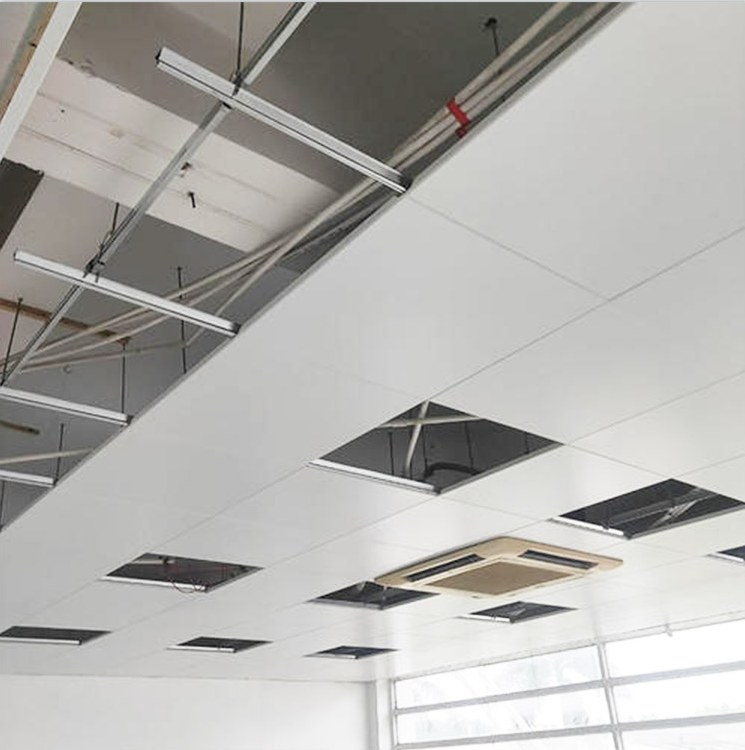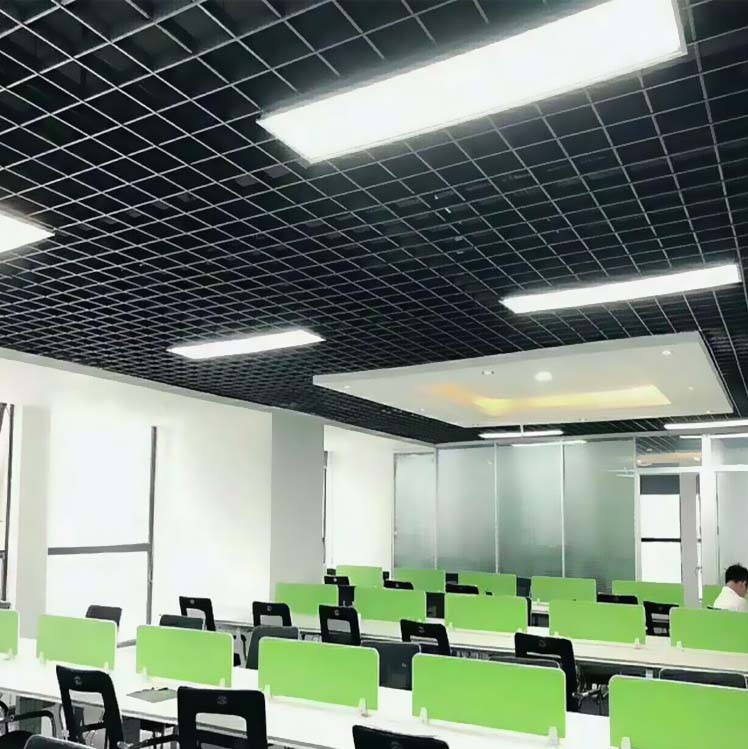There are many different types of suspended ceilings, and we generally select a good quality plain faced tile in most cases, which will not bow if there is a bit of moisture, and is nice a bright and no pattern. There are many different types of suspended ceilings and the range of tiles now can be quite baffling. The current trend is to focus on sound performance within the office and this can be dealt with by using a special tile.
Why should I have a suspended Ceiling?
Suspended ceilings are used for a number of reasons, they are quick to install and mean that all the services required for offices such as pipework for plumbing and air conditioning, as well as power and data can be hidden out of sight. Access to the services is also much easier than using a traditional plasterboard or MF type ceiling as the ceiling tiles just need to be lifted from the grid.
There are many offices with old fissured tiles, with sagging tiles and a mottled grey look they make the office look very dated. We like to fit nice white clean tiles to give a fresh look.

Why not use a Plasterboard Ceiling
Are strictly a no-no in most offices. You may see them in big shopping centres but usually there are lots of other things hanging from the ceilings to deal with acoustics, lighting and ventilation and the acoustics consideration would have been designed into the scheme. Plasterboard ceilings are fine in houses as they are quick to install and there are other plasterboard surfaces such as the partition walls in houses which need to be plastered and then painted. It is quicker just to skim the whole lot in a house. Most houses suffer from noise problems and noise transmission due to this method of build. New Building Regulations In offices sound is one of the biggest problems, and sound bounces off hard surfaces..
Advantages in using Suspended Ceilings over plasterboard.
Another advantage with a suspended ceiling over plasterboard is that it does not need any finishing, so no plastering / tape and jointing or painted. It is a finished item. When carrying out a refurbishment project you want to minimise the amount of wet trades as speed is of the essence and you do not really want to wait for plaster to dry. If the area is cold then this will create a problem. The ceiling will also not have to be painted which is one less trade or activity to worry about.
Creating Features in Ceilings
We come across problems all of the time where a traditional ‘builder’ has built an office and used plasterboard. We experienced one recently where a builder had sealed the complete ground floor up and had provided no access hatches or any way to get into the ceiling void. It is impossible to add additional voice / data cabling, get access to filters for air conditioning and ventilation units for servicing or if pumps fail, so a complete nightmare and this makes us very angry as these people should not be involved in building offices.

The other problem with this project was that the builder had not designed the offices properly and had missed out providing adequate ventilation to the offices, and completely ignored the law on this (Building Regulations). He was asked to fit air conditioning but completely threw his hands in the air as there was no-way to get anything through the building without destroying the ceiling. As it happens air conditioning was not the problem, no ventilation was provided and so an even bigger problem. At least with a suspended ceiling you would have had a chance to get the pipework through. Another problem is that a building inspector cannot assess the fire protection for the floor above with it all sealed up.
Sound Problems with Plasterboard Ceilings
I am afraid that the title of this section says it all, the other major problem with the project above was sound, it was extremely noisy in the offices, and there is no chance of improving it easily.


